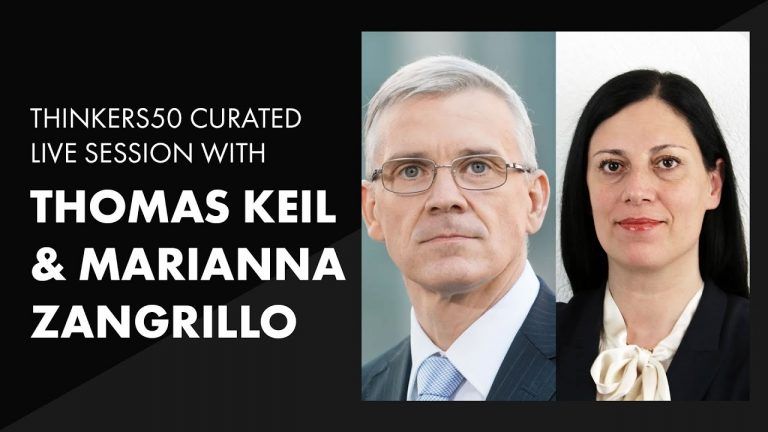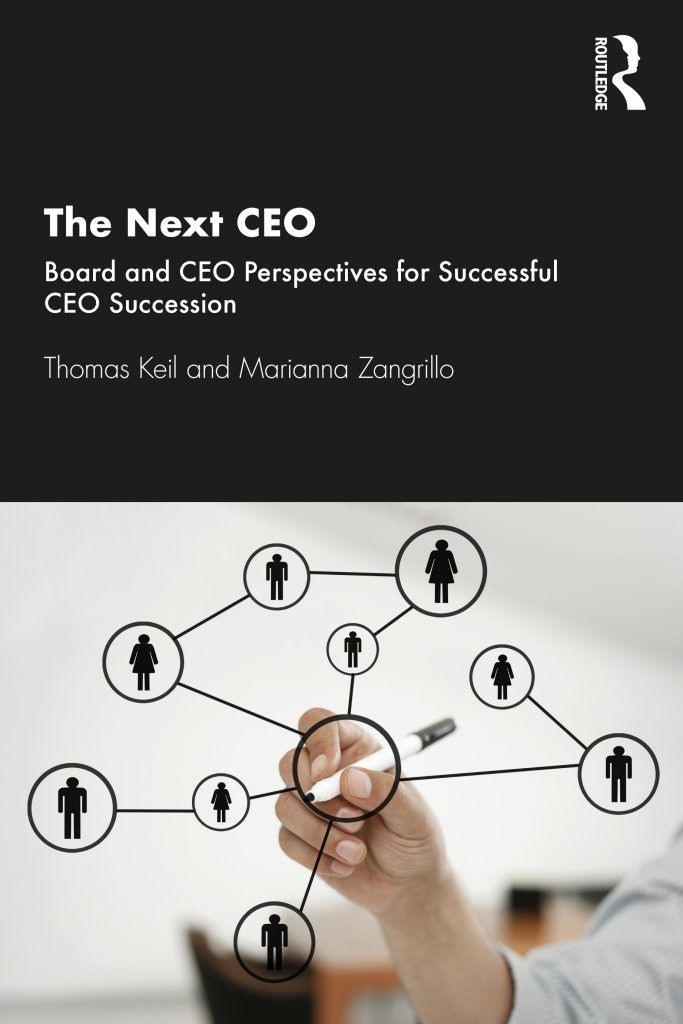

All good things come to an end — as the saying goes. And that also applies to the tenure of CEOs and other senior leaders. Or does it not?
The current average tenure of CEOs and other senior positions ranges from just below 4 years to about 9 years, underlining much fluctuation at the top. At the same time, we still see CEOs and executives that lead their company, business unit or function for 20 or more years. The list of longstanding leaders includes founder CEOs such as Warren Buffet, founder and CEO of Berkshire Hathaway since 1970, or Allan Miller, the CEO of Universal Health Services for over 41 years, and these cannot easily be removed against their will, given their ownership and standing in the firm. But it also includes leaders who have been hired into the organization, such as Martin Sorrell who has run advertising giant WPP since 1985, or Jamie Dimon who has run JPMorgan since 16 years.
Given these figures and examples one may be inclined to equate long tenure of leaders with success. But is long tenure really an asset for organizations in all circumstances? Or is it better to regularly change leadership? The answer is not straightforward.
Leaders’ long tenure brings some clear advantages to an organization. Over time, they develop strong experience on how to lead the organization and how to be successful in the given industry. Experience may allow a more efficient and effective management approach, even when the environment is changing. Also, when staying around long enough, leaders build relational assets both within and outside the organization. For example, long standing senior leaders often outright own customer relationships and may be better equipped to navigate the corporate jungle, especially when the organization is large and business is complex. Leadership changes may mean that those who leave take these assets with them to a new employer. Another argument for longer leadership tenure is that any leadership change carries an element of risk, because sitting leaders may have weaknesses, but often the known devil is better than the unknown angel.
On a general level, large conglomerates with multiple and often very different divisions like Reliance, Siemens, or Honeywell will benefit from these advantages of long tenure, and one may even go one step further that spending most of one’s career in these organizations is likely to be a benefit.
The advantages above seem to speak for senior leaders sticking around, but our research suggests that long tenure, in the same role or in the same organization, carries some specific cost for both the organization and the individual that are easily forgotten in this conversation.
Different environments require different leaders. Organizations and their environment change over time, and even more so in today’s turbulent times where technological disruption and other events, such as the unforeseeable COVID-19 pandemic, require a never seen before degree of organizational agility and change capabilities. One may ask the question of how many times leaders can reinvent themselves to adjust to these changes, particularly when adjusting may mean dissecting and reinventing what a leader created earlier? Leaders with fundamentally different capabilities may be better positioned to take an organization to the next level.
Long tenure may freeze the career path. Long tenure of leaders may also have unexpected negative consequences on the talent pool in an organization. When leadership tenure is too long and the leadership team seems to have grown roots in the board room, others in the organization may get the signal that career progression is not possible since the leadership spots are all taken. For instance, when JPMorgan recently granted Jamie Dimon a new deal to stay in his current position, the board essentially signaled that none of the existing leaders were viewed as capable to lead the company.
Success breeds complacency. Another challenge often relates to the perils of success. It is a common cognitive bias to take credit for successes and blame failures to the environment. For successful and confident leaders this often leads to a situation where they start to believe they possess the Midas’ touch and become complacent, especially when they have spent many years in the same organization (in the same or different role) and end up taking their company tenure for granted, dismissing anything or anyone that may pose a threat to their position in the company.
Too long tenure can create compliance risks. The advantages of long tenure in creating relational assets may also turn into a liability. The longer the tenure of a leader, the higher the risk that they rely on their existing relationships and less on objective merits in their dealings inside and outside the organization. Especially in publicly listed organizations, such behavior can become a not so small liability.
Lack of learning. Finally, long tenure may also have unexpected negative consequences on the individuals themselves. Without a regular change in positions, ideally in diverse companies, learning opportunities for the leader remain scarce and further development of skills and capabilities is considerably reduced. This lack of learning may then have further implications for the organization since it may become visible, especially to top performers who may notice the mismatch between the position held by senior leaders and their non-matching competences, and may therefore become more inclined to leave the organization.
There are exceptions to every rule, but in most cases, organizations do not benefit from senior leaders who remain in their positions for a too long period. Or as Greg Poux-Guillaume, CEO of the Swiss Fluid engineering company Sulzer said succinctly in an interview with the NZZ: “Also CEOs have a ‘Best Before’ date”.
Some organizations have been quite successful at rotating leaders across the top spots, as for example Nokia used to do in the early 2000s, and while that is something which mitigates some of the risks for the organization while increasing the learning opportunities for the leader, it alone cannot alone substitute bringing in new perspective on a regular basis. It is particularly worrying when an organization maintains mostly the same leadership for 15 or more years, and in some cases even starts viewing external hires to the top management team as a threat to the business.
To avoid ossification of a company’s leadership we suggest that in addition to regularly rotating leadership positions, new senior leaders need to be systematically brought up to the top positions through internal promotions or through external hires. Like the cells of a body need to regularly change to keep the human body functioning, so do the leaders of an organization.

Marianna Zangrillo and Thomas Keil are the co-authors of new book, The Next CEO: Board and CEO Perspectives for Successful CEO Succession published by Routledge, priced £29.99, available from Amazon and leading international booksellers.

Thinkers50 Limited
The Studio
Highfield Lane
Wargrave RG10 8PZ
United Kingdom

Thinkers50 Limited
The Studio
Highfield Lane
Wargrave RG10 8PZ
United Kingdom

| Cookie | Duration | Description |
|---|---|---|
| LANG | 9 hours | Linkedin set this cookie to set user's preferred language. |
| nsid | session | This cookie is set by the provider PayPal to enable the PayPal payment service in the website. |
| sp_landing | 1 day | The sp_landing is set by Spotify to implement audio content from Spotify on the website and also registers information on user interaction related to the audio content. |
| sp_t | 1 year | The sp_t cookie is set by Spotify to implement audio content from Spotify on the website and also registers information on user interaction related to the audio content. |
| tsrce | 3 days | PayPal sets this cookie to enable the PayPal payment service in the website. |
| x-pp-s | session | PayPal sets this cookie to process payments on the site. |
| __cf_bm | 30 minutes | This cookie, set by Cloudflare, is used to support Cloudflare Bot Management. |
| Cookie | Duration | Description |
|---|---|---|
| l7_az | 30 minutes | This cookie is necessary for the PayPal login-function on the website. |
| Cookie | Duration | Description |
|---|---|---|
| CONSENT | 2 years | YouTube sets this cookie via embedded youtube-videos and registers anonymous statistical data. |
| _ga | 2 years | The _ga cookie, installed by Google Analytics, calculates visitor, session and campaign data and also keeps track of site usage for the site's analytics report. The cookie stores information anonymously and assigns a randomly generated number to recognize unique visitors. |
| _gat_gtag_UA_10408481_1 | 1 minute | Set by Google to distinguish users. |
| _ga_ZP8HQ8RZXS | 2 years | This cookie is installed by Google Analytics. |
| _gid | 1 day | Installed by Google Analytics, _gid cookie stores information on how visitors use a website, while also creating an analytics report of the website's performance. Some of the data that are collected include the number of visitors, their source, and the pages they visit anonymously. |
| Cookie | Duration | Description |
|---|---|---|
| NID | 6 months | NID cookie, set by Google, is used for advertising purposes; to limit the number of times the user sees an ad, to mute unwanted ads, and to measure the effectiveness of ads. |
| test_cookie | 15 minutes | The test_cookie is set by doubleclick.net and is used to determine if the user's browser supports cookies. |
| VISITOR_INFO1_LIVE | 5 months 27 days | A cookie set by YouTube to measure bandwidth that determines whether the user gets the new or old player interface. |
| YSC | session | YSC cookie is set by Youtube and is used to track the views of embedded videos on Youtube pages. |
| yt-remote-connected-devices | never | YouTube sets this cookie to store the video preferences of the user using embedded YouTube video. |
| yt-remote-device-id | never | YouTube sets this cookie to store the video preferences of the user using embedded YouTube video. |
| yt.innertube::nextId | never | This cookie, set by YouTube, registers a unique ID to store data on what videos from YouTube the user has seen. |
| yt.innertube::requests | never | This cookie, set by YouTube, registers a unique ID to store data on what videos from YouTube the user has seen. |
| Cookie | Duration | Description |
|---|---|---|
| DEVICE_INFO | 5 months 27 days | No description |
| loglevel | never | No description available. |
| m | 2 years | No description available. |
Thinkers50 Limited has updated its Privacy Policy on 28 March 2024 with several amendments and additions to the previous version, to fully incorporate to the text information required by current applicable date protection regulation. Processing of the personal data of Thinkers50’s customers, potential customers and other stakeholders has not been changed essentially, but the texts have been clarified and amended to give more detailed information of the processing activities.